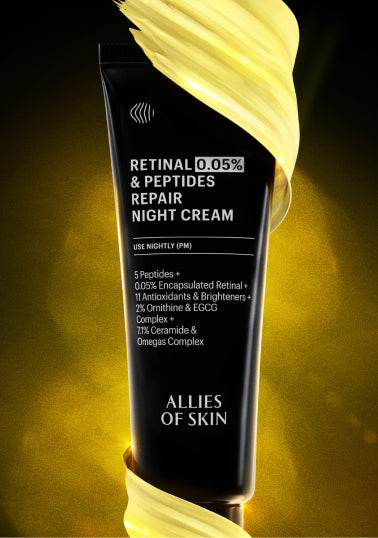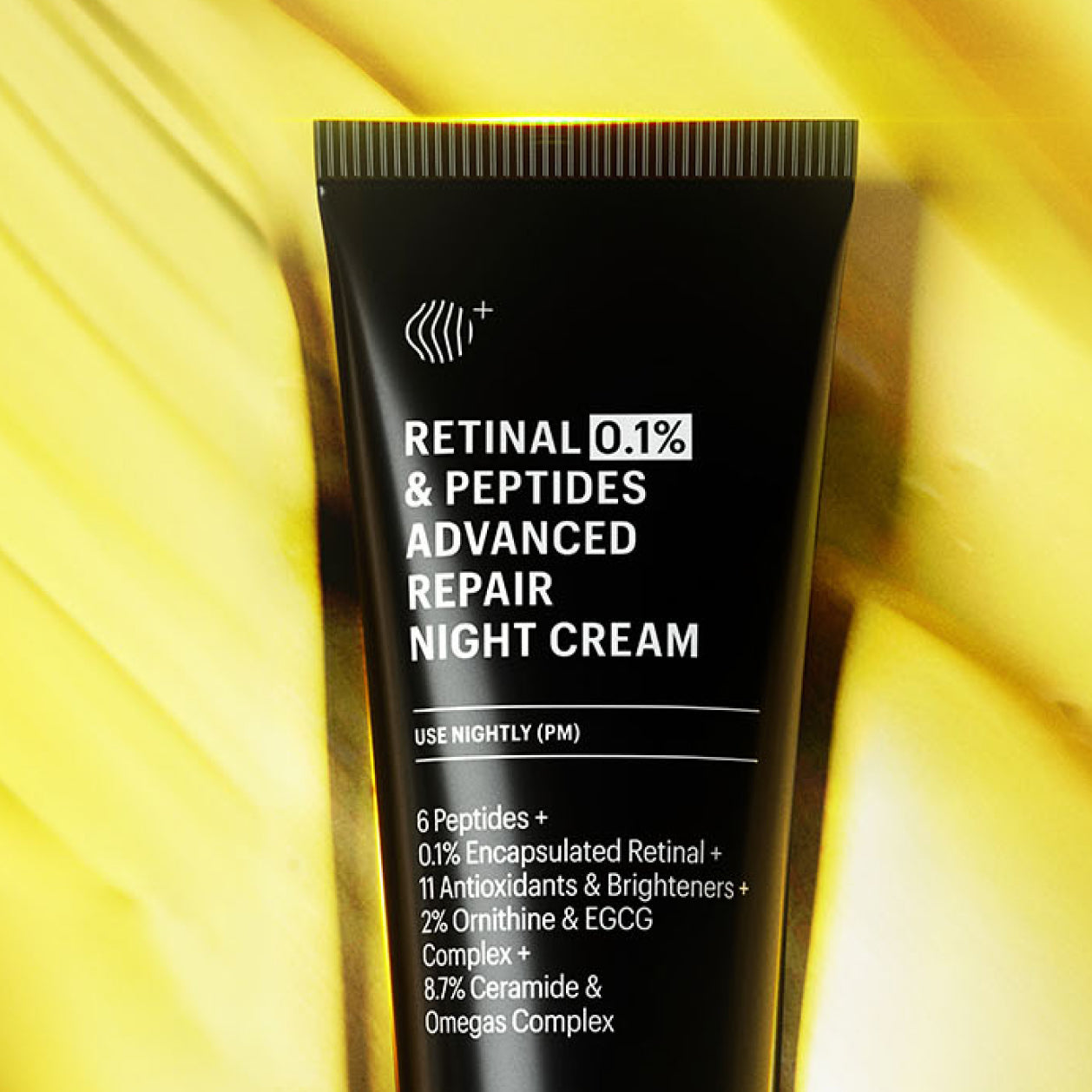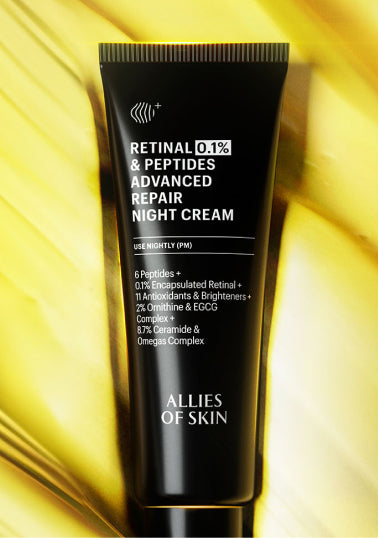-

 New
NewINTRODUCING BREAKTHROUGHT RETINAL
92% SEE MORE
RADIANT SKIN. ¹⁰
Discover NEW Advanced Repair Night Cream
SUPERCHARGED WITH CLINICALLY-PROVEN ACTIVES


SUPERCHARGED RESULTS
IN JUST 1 USE
[0.05%]
- 25% more radiant skin.⁶
- Instant improvement on sagging skin.⁷
[0.1%]
- 27% more radiant skin.⁸
- Instant improvement on sagging skin.⁹
IN JUST 8 DAYS [0.1%]
- 1.3x faster skin renewal.⁵
- 27% accelerated cellular activity.⁵
IN JUST 4 WEEKS
[0.05%]
- Up to 75% more radiant skin.¹³
- 92% experience more radiant skin.¹⁰
- 18% less sagging skin.¹⁰
- Up to 66% less sagging skin.¹³
[0.1%]
- Up to 75% more radiant skin.¹⁴
- 92% experience more radiant skin.¹²
- Promotes smoother + firmer-looking skin.¹¹
- Helps improve skin elasticity.¹¹
- 84% see smoother skin.¹²
FEATURING
- PEPTIDES
Visibly reduces wrinkles for smoother, firmer looking skin.
- ORNITHINE & EGCG COMPLEX
Soothing, calming properties, visibly reduces structural ageing and plumps.
- CERAMIDE & OMEGAS COMPLEX
Reinforces the skin barrier, soothes, helps maintain moisture balance.
DISCOVER THE RETINAL DIFFERENCE
- 30% gentler.¹
- 3X more bio-active.²
- 11X faster acting.³
- Retinol needs 10X the concentration of Retinal to maintain collagen levels.⁴
2 PROGRESSIVE STRENGTHS TO BUILD YOUR TOLERANCE UNTIL THE LAST WRINKLE
NEW TO RETINAL?


START WITH
Retinal 0.05% & Peptides Repair night cream
For retinal beginners, to help prevent signs of premature skin aging, and improve fine lines and dullness. Use nightly, or every other night for sensitive skin, building up to nightly use
EXPERIENCED USER?


DIAL UP TO
RETINAL 0.1% & PEPTIDES REPAIR NIGHT CREAM
For wrinkles, discolouration and visible signs of skin ageing. With more Ceramides and Omegas to minimise the risk of irritation, if you feel sensitivity from this formula, alternate with the 0.05% concentration, building to nightly use.
¹ Fluhr, J. W., Vienne, M.-P. ., Lauze, C., Dupuy, P., Gehring, W., & Gloor, M. (1999). Tolerance Profile of Retinol, Retinaldehyde and Retinoic Acid under Maximized and Long-Term Clinical Conditions. Dermatology, 199(1), 57–60
² Saurat, J. H., Didierjean, L., Masgrau, E., Piletta, P. A., Jaconi, S., Chatellard-Gruaz, D., Gumowski, D., Masouyé, I., Salomon, D., & Siegenthaler, G. (1994). Topical Retinaldehyde on Human Skin: Biologic Effects and Tolerance. Journal of Investigative Dermatology, 103(6), 770–774.
³ Siegenthaler, G., Jean‐Hilaire Saurat, & Ponec, M. (1990). Retinol and retinal metabolism. Relationship to the state of differentiation of cultured human keratinocytes. Biochemical Journal, 268(2), 371–378.
⁴ Brown, A., Furmanczyk, M., Ramos, D., Adrià Ribes, Pons, L., Bustos, J., Fernández, A. R., Granger, C., & Jourdan, E. (2023). Natural Retinol Analogs Potentiate the Effects of Retinal on Aged and Photodamaged Skin: Results from In Vitro to Clinical Studies. Dermatology and Therapy, 13(10), 2299–2317.
⁵ Clinical testing via instrumental analysis with 20 participants after nightly use for 8 days
⁶ Clinical testing via visual assessment using Griffith’s 10-point scale analysis on 28 participants immediately after the first application/in a day.
⁷ Clinical testing via expert evaluation of 28 participants immediately after the first application/in a day
⁸ Clinical testing via visual assessment using Griffith’s 10-point scale analysis on 27 participants immediately after the first application/in a day.
⁹ Clinical testing via expert evaluation of 27 participants immediately after the first application/in a day.
¹⁰ Clinical testing with 28 participants after twice a day use for 28 days.
¹¹ Clinical testing with 26 participants after twice a day use for 28 days.
¹² Self-assessment study with 26 participants after twice a day use for 28 days.
¹³ Clinical testing with 28 participants based on the best result after twice a day use for 28 days.
¹⁴ Clinical testing with 26 participants based on the best result after twice a day use for 28 days.









